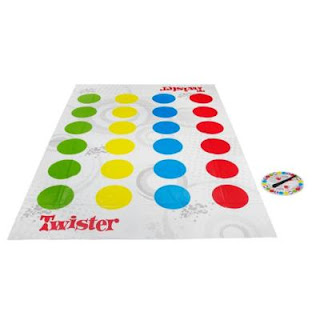Hi everyone! I am back, hehe.
I would like to share something here. Well hehe ofcourse. As you know, I am a tenth grader student at SMAN 3 Bandung. Beside my academical activities, I have some non-academical activities too! Well as you can see from the title of the post, IT'S EXTRACURRICULAR!
So, on Friday, October 7th, extracurriculars from SMAN 3 Bandung opened registration for new members. I was so excited yet confused because I didn't know which extracurricukar to choose. Fyi, there are 37 extracurriculars in SMAN 3. But I did have some potential candidates(?) hehehe. Well here I'm going to tell you the extracurriculars that I finally chose. I picked 5 extracurriculars. Why? Because I was afraid that I'm gonna regret my decision.
DKM Al-Furqon
DKM Al-Furqon is a religious extracurricular. DKM is the abbreviation of Dewan Keluarga Masjid. Its activities are usually related with Islamic education such as mentoring or islamic themed study. DKM usually also hold 'seminar keakhwatan'. It is an event where we talk about women, generally they invite some popular women to give lessons about women (ofcourse!), especially on women's rank in Islam.
So why did I choose DKM Al-Furqon? This might sound cliche but I want to be a better person and a closer person to The Almighty. One of the BK teacher also said to me that one day if I feel so stressed about anything, DKM is a good place to share my stories.
Tiloe's Theatre
Tiloe's Theatre or T'sT is 3 Senior Highschool's cabaret extracurricular. T'sT's activities, as you know, ofcourse they perform a lot. Especially at school events. To join T'sT, we must attend DIKLAT (pendidikan dan pelatihan). Well there also PRADIKLAT, i was given some lessons that will be valuable in my T'sT activities. The DIKLAT was spectacular, it reminds me that T'sT is not always about performing and having fun. It is also about hardwork and organization.
So why did I choose T'sT? I like doing roleplays, it's one of the thing that i enjoyed the most. As I said in my first post, I've done a parody of Pete Docter's "Inside Out".
Student's English Forum (SEF 3)
SEF 3 is an English rhetoric art's extracurricular in SMAN 3 Bandung. Its activities contain of storytelling, speech, debate, and other public speaking activity.
I chose this extracurricular because first I'm a fan of public speaking and I want to develop my English speaking skills.
Suara Pelajar Debat (SPeD)
SPeD is almost the same with SEF 3. The difference is that SPeD uses Bahasa Indonesia while SEF 3 uses English. SPeD has some different divisions with SEF. SPeD has Public Speaking, Debate, Rasta (Radio Sekolah Tiga).
I chose this because of the same reason why i chose SEF. Hehe.
SSR (Sanggar Seni Rupa)
SSR is an Art axtracurricular in SMAN 3.
I chose this because I want to develop my creativity and art skills.
Well I think that is all for this post. Thank you.
So why did I choose T'sT? I like doing roleplays, it's one of the thing that i enjoyed the most. As I said in my first post, I've done a parody of Pete Docter's "Inside Out".
Student's English Forum (SEF 3)
SEF 3 is an English rhetoric art's extracurricular in SMAN 3 Bandung. Its activities contain of storytelling, speech, debate, and other public speaking activity.
I chose this extracurricular because first I'm a fan of public speaking and I want to develop my English speaking skills.
Suara Pelajar Debat (SPeD)
SPeD is almost the same with SEF 3. The difference is that SPeD uses Bahasa Indonesia while SEF 3 uses English. SPeD has some different divisions with SEF. SPeD has Public Speaking, Debate, Rasta (Radio Sekolah Tiga).
I chose this because of the same reason why i chose SEF. Hehe.
SSR (Sanggar Seni Rupa)
SSR is an Art axtracurricular in SMAN 3.
I chose this because I want to develop my creativity and art skills.
Well I think that is all for this post. Thank you.























